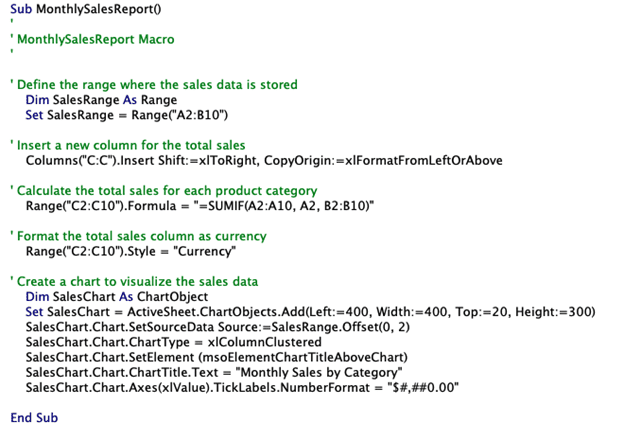Imagine you’re working with a spreadsheet for your small business and often perform repetitive tasks like formatting cells, calculating totals, or generating reports. Wouldn’t it be nice if there were a way to automate these tasks, so you can save time and focus on more important aspects of your business?
That’s where spreadsheet macros come into play! A macro is like a tiny assistant that lives within your spreadsheet software, ready to perform a specific sequence of actions at your command. It’s a set of instructions that you can create and customize to automate repetitive tasks, improve efficiency, and reduce the chances of making errors.
For example, let’s say you have a monthly sales report and need to calculate the total sales for each product category. You could create a macro that automatically applies the necessary formulas, formats the results, and even generates a nice-looking chart. Then, every month, you just click a button, and your macro takes care of everything in a matter of seconds!
Here’s an example macro that could be used for the scenario described above:

This macro performs the following actions:
- Defines the range where the sales data is stored.
- Inserts a new column for the total sales.
- Calculates the total sales for each product category using the SUMIF function.
- Formats the total sales column as currency.
- Creates a chart to visualize the sales data.
Macros are powerful tools that can help you manage your spreadsheets more effectively, streamlining your workflow and giving you more time to focus on what really matters in your business. So, the next time you find yourself doing the same task over and over again in a spreadsheet, consider creating a macro to make your life a little easier!